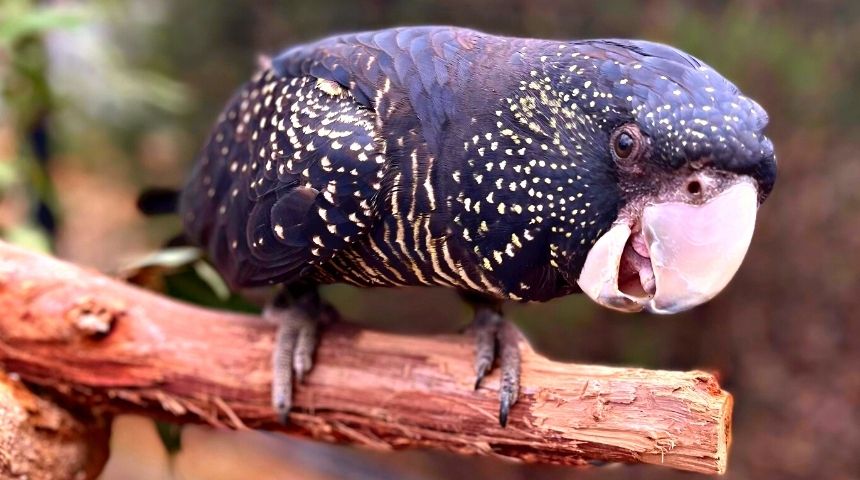
Murdoch University’s Black Cockatoo Conservation Management Project will conduct ground-breaking health and ecological research on Western Australia’s iconic black cockatoos thanks to more than $1.5 million in funding from the State Government.
Over five years, the team, which is based at Murdoch’s Harry Butler Institute, will look at the major threats to survivorship for WA’s three species of black cockatoo: Carnaby’s (Calyptorhynchus latirostris); Baudin’s (Calyptorhynchus baudinii); and forest red-tailed (Calyptorhynchus banksii naso).
All three species are Matters of National Environmental Significance (MNES) under the Environment Protection and Biodiversity Conservation Act (1999), the Carnaby’s and Baudin’s cockatoos listed as endangered, and forest red-tailed black cockatoo as vulnerable.
Over the last two decades populations have been estimated at 40,000 for Carnaby's cockatoos, 15,000 for forest red-tailed black cockatoos, and just 12,000 for Baudin's cockatoos, but the reality is that the numbers are likely much lower.
Lead researcher Professor Kris Warren said of major concern was rapid urban and industrial growth in the Perth-Peel region and the south-west of WA.
Development and biodiversity conservation are not mutually exclusive,” Professor Kris Warren
“Perth is expanding, but with the right approach it could be a strong model for how development and conservation can be managed synergistically," Professor Warren said.
The research is being conducted in collaboration with Main Roads Western Australia, Public Transport Authority – Metronet, the Department of Biodiversity, Conservation and Attractions – Parks and Wildlife and Perth Zoo, Australian Black Cockatoo Specialists, Iluka Resources Limited, Kaarakin Black Cockatoo Conservation Centre, Birdlife Western Australia, and the University of Amsterdam.
Professor Warren said her team was in a strong position to work alongside government to identify areas of habitat that are high-use, and to inform decisions regarding which areas are most appropriate to conserve and manage, in order to halt black cockatoo population decline.
Main Roads Western Australia Environment Manager Martine Scheltema said Main Roads was committed to minimising the impact of important infrastructure on the environment, including on black cockatoos.
“This funding has been contributed from major infrastructure projects like the Roe Highway - Kalamunda Road Interchange, Mitchell Freeway Extension, Great Eastern Highway Bypass Interchanges, Tonkin Gap, and SMART Freeways Mitchell Southbound projects, as well as METRONET’s Thornlie-Cockburn Link, Yanchep Rail Extension and the Morley Ellenbrook Line projects,” she said.
“In addition to supporting this important research project, Main Roads is investing in creating additional black cockatoo habitat through the Wheatbelt Revegetation Bank along or adjacent to road reserves in rural WA as part of the government’s Green Jobs program, installing artificial nesting hollows and protecting existing black cockatoo habitat.”
Senior Research Fellow Dr Jill Shephard said the project will use innovative tracking methodologies to monitor the birds.
“This will help us to determine how habitat is used and to identify threatening processes, giving us a powerful way to guide the management of sustainable landscapes into the future,” she said.
Professor Warren said as Perth develops, it will be important to implement effective efforts to ensure the conservation management of threatened and endangered species.
“A large part of what makes Perth special is its unique and endemic biodiversity, which we are fortunate to have in our urban areas, including our iconic black cockatoos,” she said.
Murdoch University Black Cockatoo Conservation Management Project
Tracking
The project utilises the innovative tracking methodologies to undertake a movement ecology study of Carnaby’s cockatoos, Baudin’s cockatoos and forest red-tailed black cockatoos to determine habitat use and threatening processes in modified landscapes.
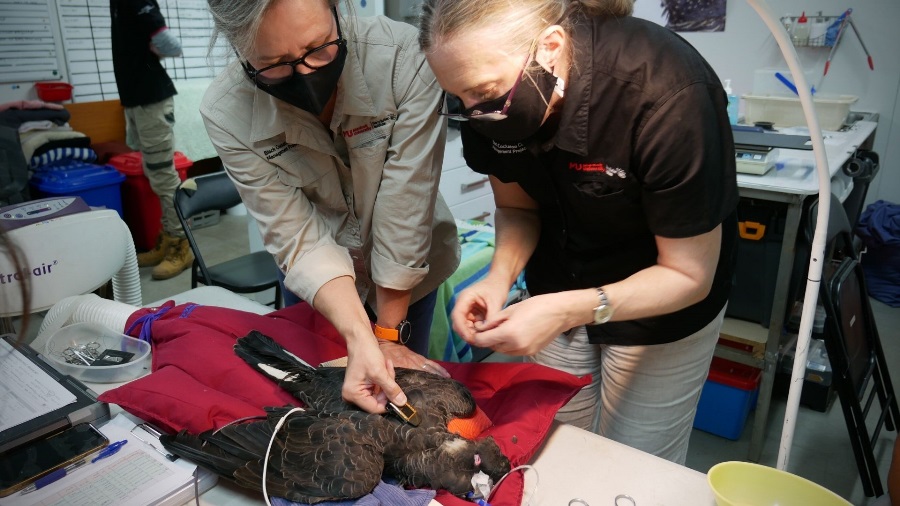
Using GPS and satellite telemetry, the team is to obtain flock movement, behavioural and ecological data to inform conservation and land management planning.
The three species of black cockatoos will be tracked on the Perth-Peel Coastal Plain and in the south-west forest region to better understand migratory movement dynamics of the species across its distribution range.
GPS and PTT satellite tags will be attached under anaesthesia to wild birds at breeding grounds, and to birds which have been treated for injury and undergone rehabilitation for release back into the wild.
The tagged birds integrate well back into the wild flocks and act as markers for flock movement and activity.
Disease
Focussing on Carnaby’s cockatoos, the health research aims to better understand the potential role of disease as a threatening process for this species.
Several potential pathogens associated with avian disease have been found in wild Carnaby’s nestlings in south-western Australia, including: psittacine beak and feather disease; polyoma virus; and Chlamydia sp.
The clinical significance of these diseases for species survival remains unknown. The team is also investigating Carnaby’s cockatoo Hindlimb Paralysis Syndrome (CHiPs), likely associated with toxicity events involving birds exposed to agricultural chemicals at breeding sites.
Every year a number of Carnaby’s cockatoos that have migrated back to the Perth-Peel Coastal Plain following the breeding season, are observed with clinical symptoms suggestive of delayed organophosphate neuropathy.
This disease is also suspected to have caused two mass mortality events at a key Wheatbelt breeding site which resulted in a population crash of more than 90 per cent of breeding birds, and functional extirpation of this important breeding population.
Additionally, the research team is investigating different methodologies to age black cockatoos. The ability to age wild birds to understand age structure has significant conservation application and can help inform population viability analyses.
Western Australia’s Black Cockatoos
Carnaby’s cockatoos
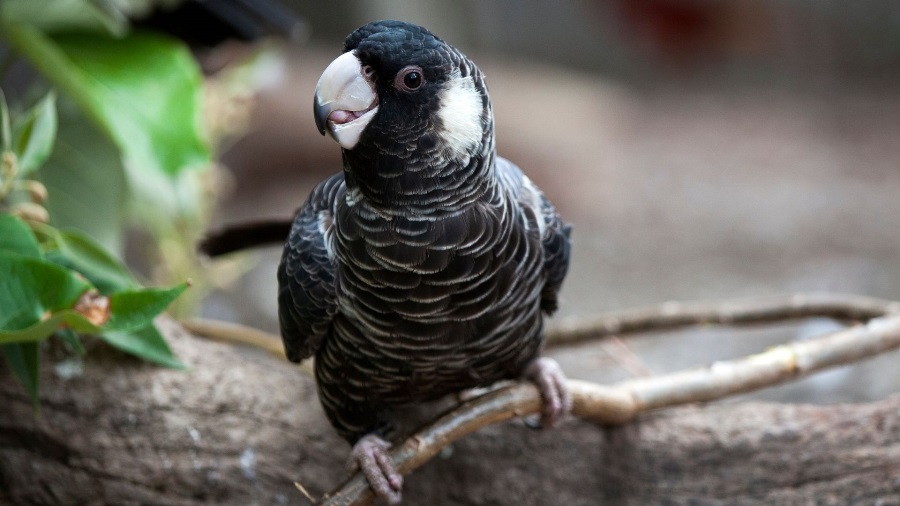
Carnaby’s cockatoos are listed as Endangered under Australian Federal law (Environment Protection and Biodiversity Conservation Act 1999) and internationally by the IUCN.
At the state level they are listed as Endangered under the Western Australia Biodiversity Conservation Act 20165.
The species has undergone an estimated 50 per cent decline over the last five decades, including an estimated average decline of 5 per cent per annum across the Perth-Peel Coastal Plain over the last nine years.
Overall this has contributed to a suggested 30 per cent range contraction, and significant loss of breeding populations.
Forest Red-Tailed black cockatoos
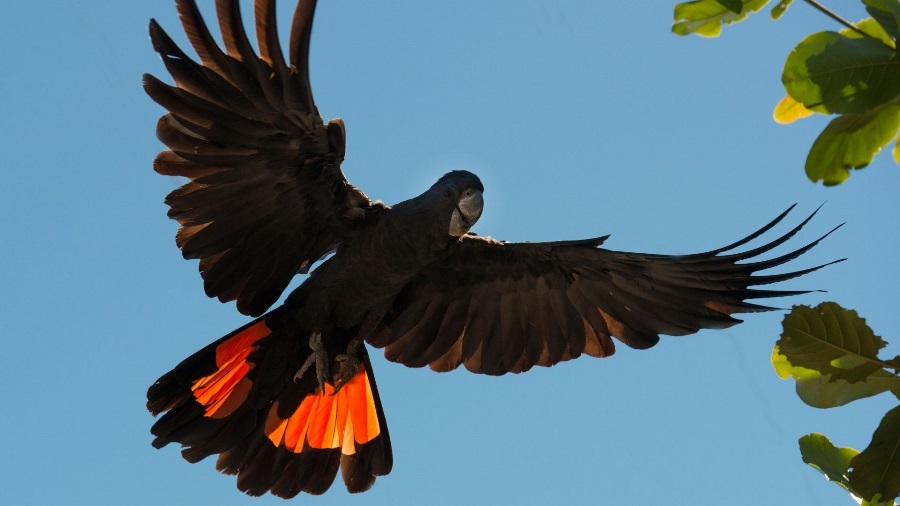
Forest red-tailed black cockatoos have declined in range by 30 per cent as a result of habitat loss and have suffered a marked decline in population numbers since the 1950s.
The species is listed as Vulnerable under Australian Federal law (Environment Protection and Biodiversity Conservation Act 1999) and under the Western Australia Biodiversity Conservation Act 2016.
The forest red-tailed black cockatoo fits the IUCN Red List Criteria for Vulnerable due to a projected or suspected decline in the population of more than 30 per cent within the next 10 years or three generations.
Baudin’s cockatoos
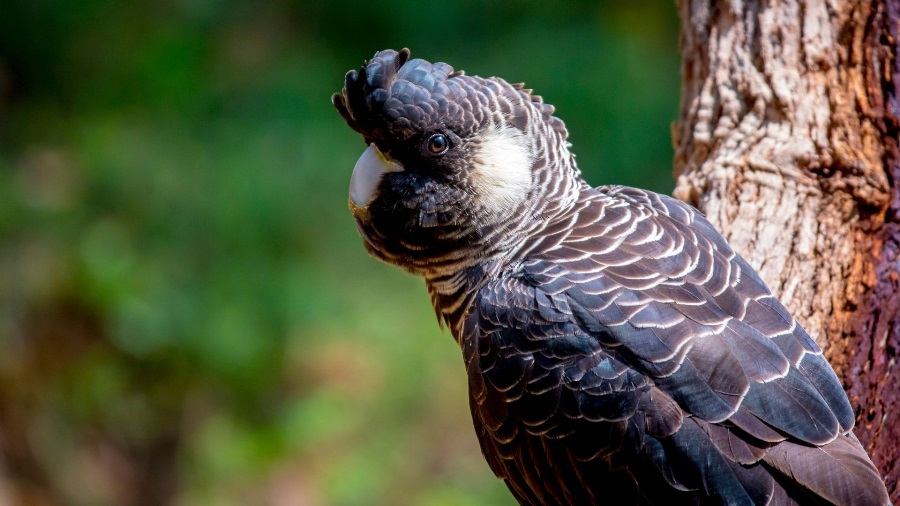
Baudin’s cockatoos are listed as Endangered at the Federal Level (Environment Protection and Biodiversity Conservation Act 1999), and at the State Level (Biodiversity Conservation Act 2016)5.
The population has been in decline over the last 50 years, however in the last eleven years there has been a dramatic decline (over 90 per cent) in the numbers recorded at traditional autumn-winter roost sites in the northern Darling Range. Additionally, in 2017 there were unexpectedly few records of large flocks of this species in the south-west.
This research supports the United Nations Sustainable Development Goal 15 to protect, restore and promote sustainable use of terrestrial ecosystems, sustainably manage forests, combat desertification, and halt and reverse land degradation and halt biodiversity loss.